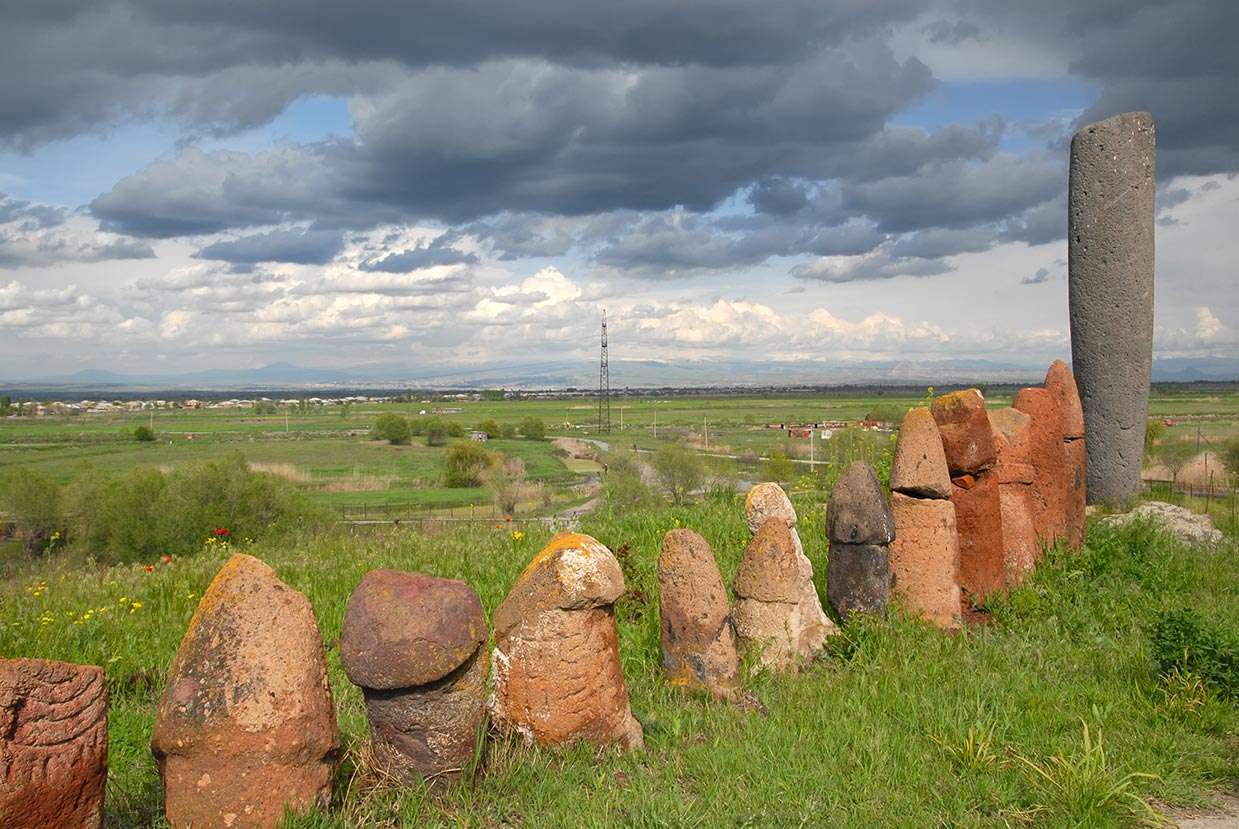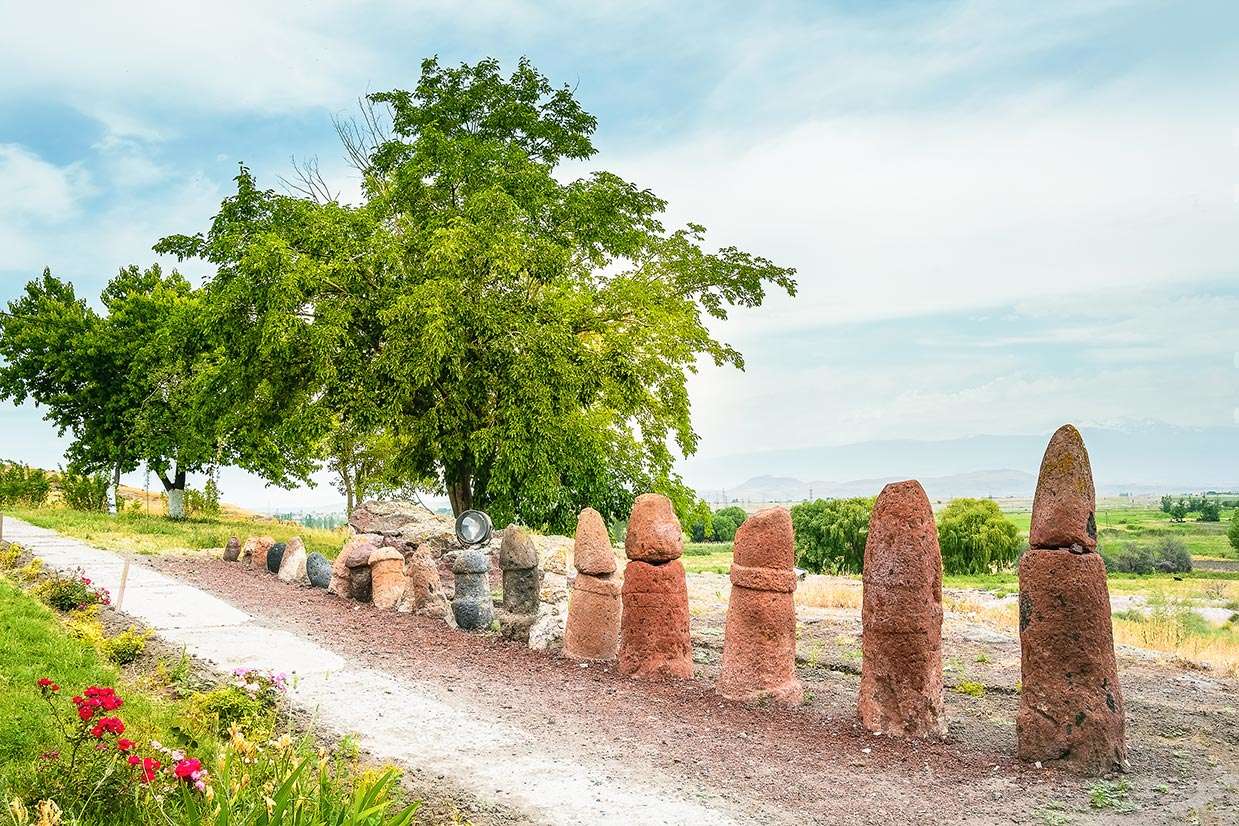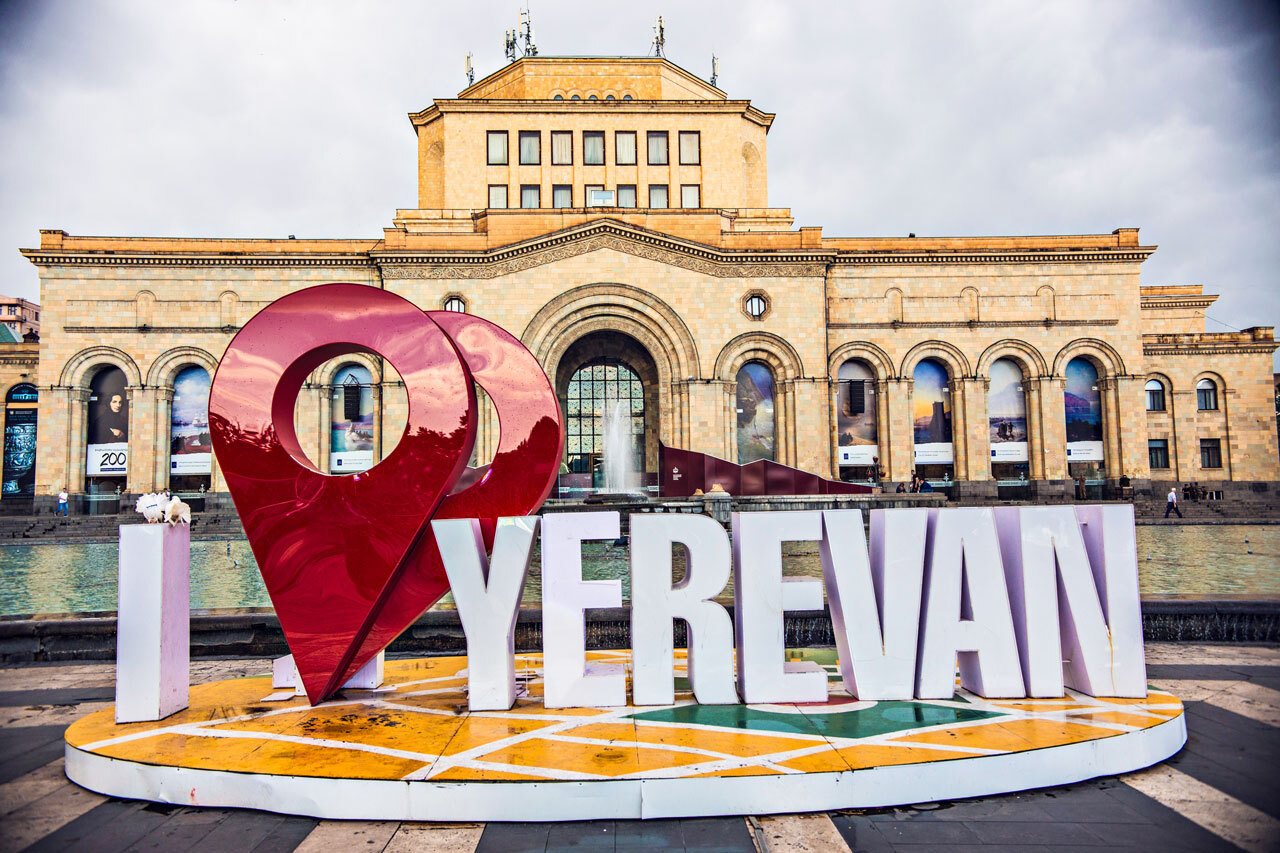Metsamor
This fortified city is located in the middle of the Ararat Province between Etchmiadzin and Armavir. It is one of the old settlements on the Armenian Plateau. The archaeological excavations that began in 1965 revealed various items: the oldest one dating back to the Neolithic, followed by three Bronze Age strata, two from the Iron Age (pre-Urartian, Urartian), one of the ancient and one of the Middle Ages. Already in the early Bronze Age (3rd - 2nd Century BC), Metsamor was a cradle of civilization. The city was at its peak at that time, when it was a major producer of copper and probably bronze. One of the first centres of metallurgical development is located here. Religious and everyday objects, which served as funerary objects, clearly show that there was already a hierarchization of society in the Bronze Age.
The coins from all over the world that was found here, a frog-shaped agate weight stone that belonged to a Babylonian (16th century BC), or a Carnelian seal from Egypt with hieroglyphic inscription (15th century BC) prove that Metsamor was once at the crossroads of various major trade routes. Today, more than 22000 artefacts are exhibited in the Museum of Metsamor, near the archaeological site. The archaeological site of ancient Metsamor is located about 4 km southeast of the town, near the village of Taronik. Currently, the city of Metsamor houses a cultural centre, a public library, and a music school. The name of the city derives from the nearby Metsamor River. It consists of 2 Armenian words: mets (meaning big) and mor (meaning mother). The name most likely refers to the Virgin Mary as the Mother of God.
The construction of the settlement Metsamor started in 1969 within the Hoktemberyan Region of the Armenian Soviet Socialist Republic. It was founded mainly as a housing estate for employees of the Metsamor nuclear power plant. Following the independence of Armenia in 1991, Metsamor maintained its status as a municipal settlement in the newly formed province of Armavir, following administrative reforms in 1995. The construction of the nuclear power plant started in 1969. However, it was temporarily closed for security reasons in 1989 after the 1988 earthquake in Armenia. Later, economic and transport-related blockades lead to an energetic breakdown which made to reopen the facility. The facility was modernized and refurbished between 2003 and 2015. Here, the dragon-stones are especially interesting. Dragon-stones are among the most important monuments of Armenian prehistory. They are fish-shaped stones, sometimes carved with a fisheye. They were often built at the sources of natural and artificial lakes. Such stones were also found on the northern shore of Lake Sevan. The astronomical archaeologists have also found much evidence of astronomical alignments. The discoveries of recent years have made it possible to conclude that the Metsamor observatory is not an accidental phenomenon in the history of a mysterious culture, but a testament to the existence of a developed astronomical school whose achievements may seem fantastic.
Near Metsamor, you may also unveil Sardarapat. It was built in memory of the heroes of the Sardarapat battle in 1918. It is located 25 kilometres from Etchmiadzin. The memorial park was created in 1968 on the place of the battlefield. The entrance is flanked by big winged red tuff oxen. A staircase leads to a square from where a 26-meter high bell tower rises. Metsamor and its nearby places are interesting tourist destinations in Armenia.







